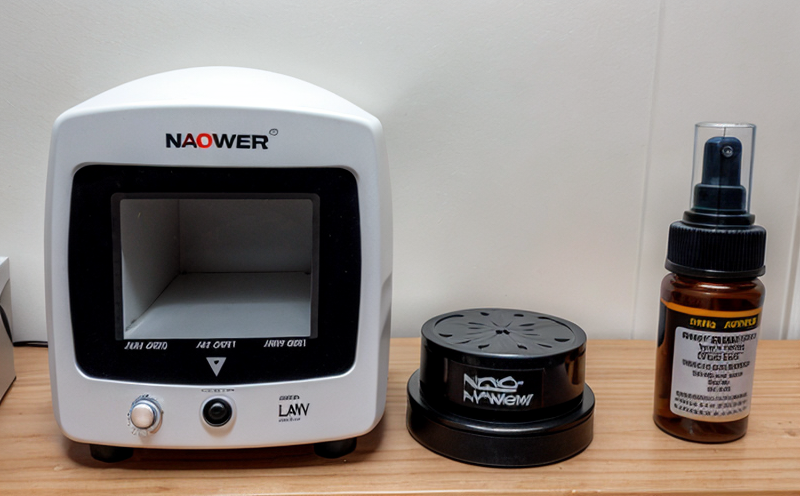ASTM D7481 Flow Function Testing of Fine Powders by Shear Cell
The ASTM D7481 standard provides a method to determine the flow function of fine powders using a shear cell. This test is critical for industries that handle particulates such as nanopowders, pharmaceuticals, and agricultural products, where efficient powder flow is essential for production processes. The flow function, which quantifies the ease with which particles can be moved through a confined space under applied stress, is a key parameter in evaluating the bulk properties of materials.
The shear cell method involves applying a controlled shear force to the sample within a defined geometry, typically a cylindrical or conical chamber. This allows for accurate measurement of the flow function without the need for large quantities of material. The test setup ensures that the results are repeatable and can be directly compared between different samples.
The ASTM D7481 standard specifies detailed procedures to prepare the sample, apply shear stress, and measure the resulting flow behavior. Proper specimen preparation is crucial; particles must be free from agglomerates or moisture that could affect test results. The process involves sieving the material to a specific particle size range and ensuring homogeneity.
Once prepared, the sample is introduced into the shear cell chamber. Shear stress is applied gradually until the powder starts flowing. The flow function is then calculated based on the shear stress required for this transition. This value provides insights into the powder's cohesion, shape, and surface properties. The results are reported as a dimensionless number that reflects the ease of flow.
The shear cell method offers several advantages over other flowability tests. It is more precise because it measures the flow function directly rather than relying on indirect methods like tapped density or angle of repose. Additionally, it allows for controlled conditions and can be used to study the effect of different processing parameters on powder behavior.
Industries that handle fine powders benefit greatly from this testing method. For example, in pharmaceutical manufacturing, efficient flow is essential for achieving consistent tabletting performance. In agricultural applications, poor powder flow can lead to uneven distribution and reduced efficacy. The shear cell test provides a reliable way to assess these issues early in the development process.
Proper interpretation of the results from ASTM D7481 is crucial for accurate decision-making. By understanding the flow function, engineers can optimize processing conditions such as moisture content or particle size distribution. This leads to improved product quality and reduced waste during production.
Why Choose This Test
The ASTM D7481 flow function testing by shear cell is an essential tool for industries dealing with fine powders. Its precision and reliability make it a preferred choice over other flowability tests, ensuring accurate assessment of powder behavior.
- Direct measurement of the flow function provides reliable data that can be used to optimize processing conditions.
- The method allows for controlled testing under defined parameters, ensuring reproducibility and comparability between samples.
- Precise results help in identifying issues early in the product development cycle, leading to improved quality control.
By choosing this test, you ensure that your powders meet stringent industry standards. The shear cell method is particularly useful for nanopowders where even small variations can have significant impacts on performance.
Quality and Reliability Assurance
The ASTM D7481 flow function testing by shear cell plays a crucial role in ensuring the quality and reliability of fine powders used across various industries. This test is particularly important for sectors such as pharmaceuticals, agriculture, and materials science where consistent powder behavior is paramount.
- Consistency: The method provides repeatable results that can be relied upon to ensure the uniformity of product quality.
- Safety: By identifying potential flow issues early in the production process, this test helps prevent accidents and ensures worker safety.
The shear cell test is part of a broader approach to quality assurance. It complements other testing methods that assess different aspects of powder behavior such as compressibility or cohesion. Together, these tests provide a comprehensive view of the material's properties and performance.
With the increasing demand for high-quality materials in various sectors, the ASTM D7481 flow function test has become an indispensable tool. It helps manufacturers meet stringent regulatory requirements while ensuring that their products perform consistently across different environments.
Environmental and Sustainability Contributions
The ASTM D7481 flow function testing by shear cell contributes positively to environmental sustainability. By providing accurate data on powder behavior, this test helps in optimizing production processes, reducing waste, and improving energy efficiency.
- Reduced Waste: Accurate assessment of flowability allows for efficient handling and processing, minimizing the risk of waste generation.
- Energy Efficiency: Optimizing powder flow can lead to better process control, which in turn reduces energy consumption during manufacturing processes.
The shear cell method supports sustainable practices by enabling manufacturers to make informed decisions that reduce environmental impact. By ensuring that powders meet quality standards early in the production cycle, this test helps prevent costly rejections and returns downstream in the supply chain.
Adopting ASTM D7481 flow function testing as part of your quality assurance protocol can contribute significantly to a more sustainable future. It demonstrates a commitment to both product excellence and environmental responsibility.





